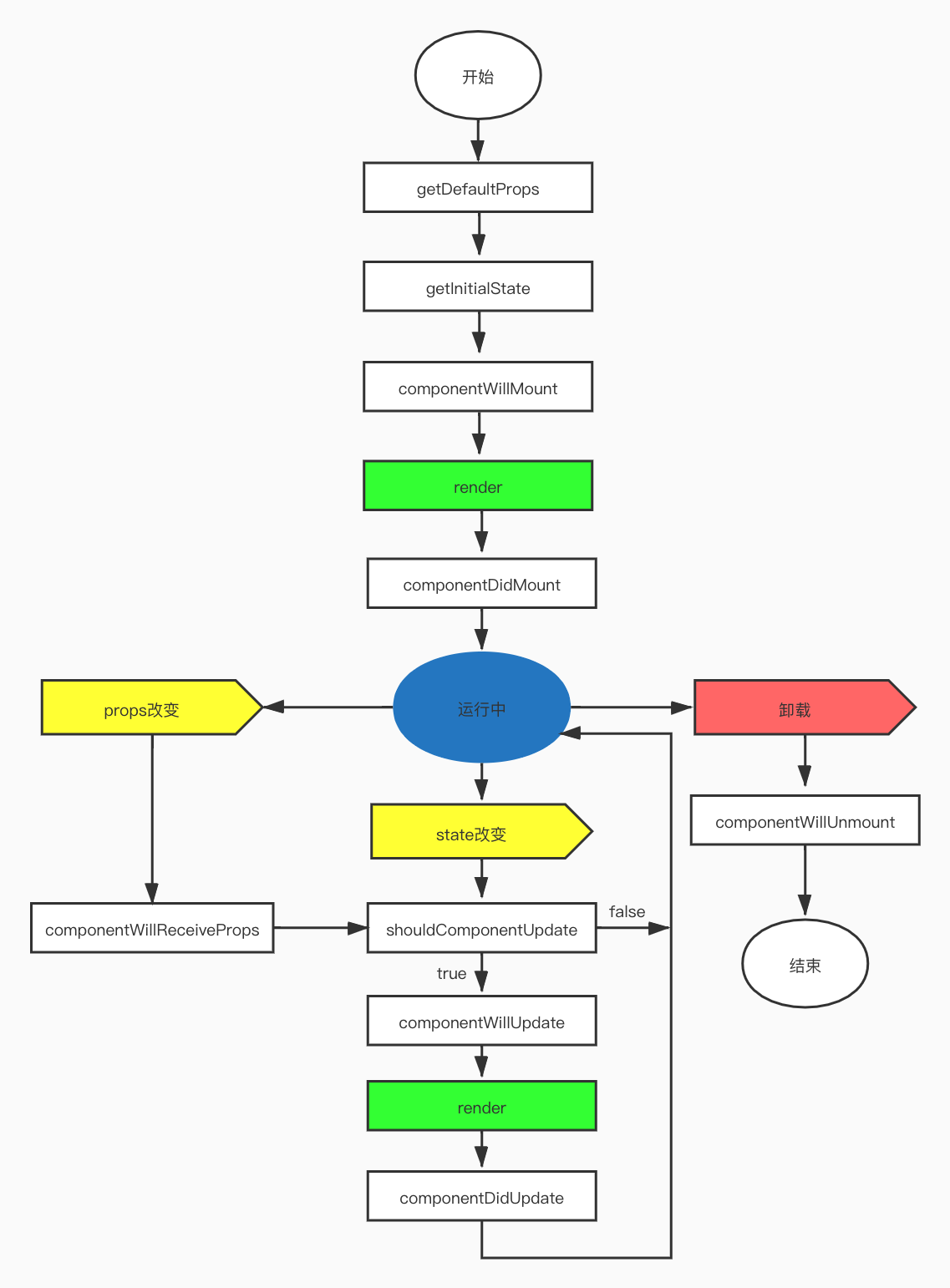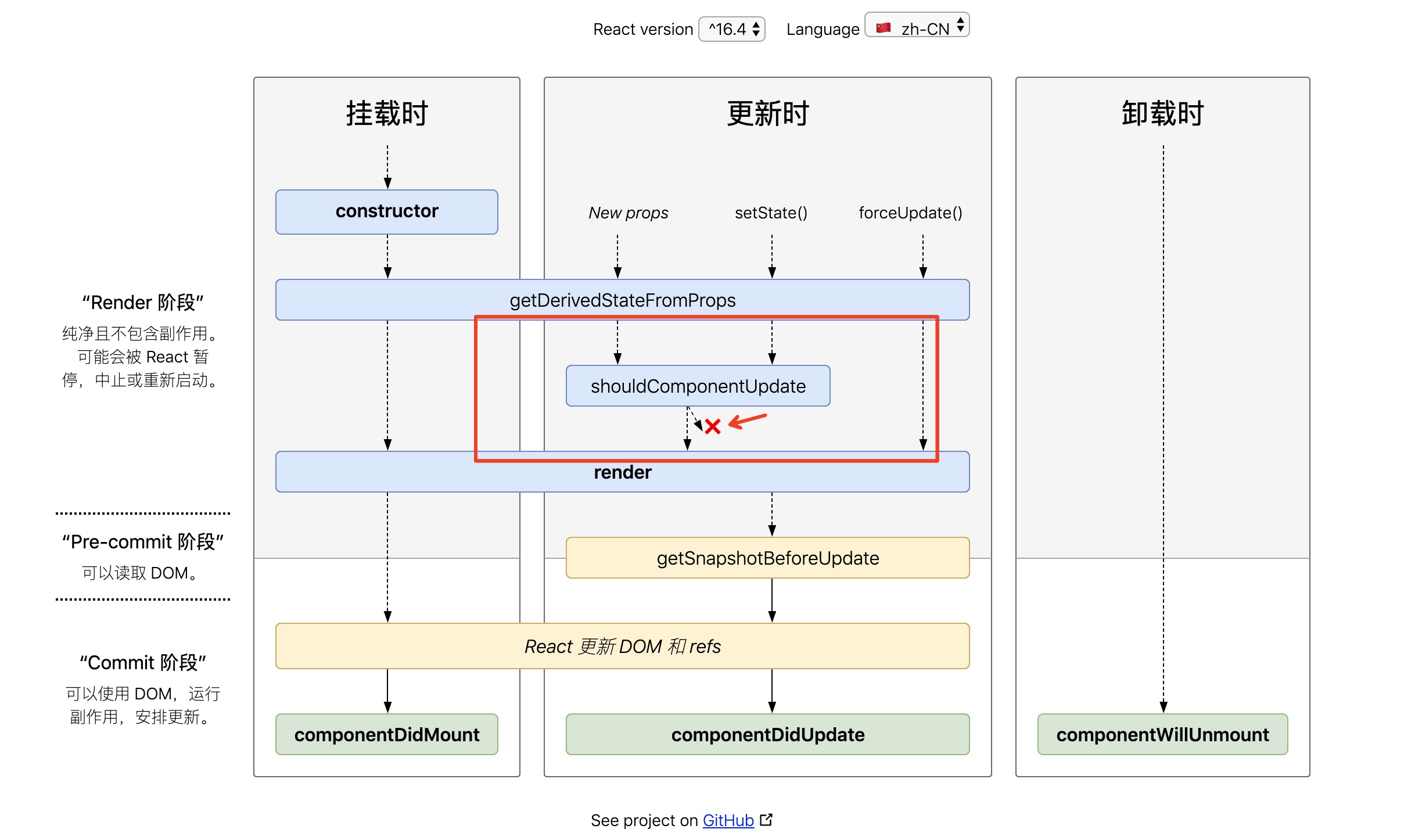# React v16.4的生命周期理解
# 前言
好久没写react了,新的一些特性都没有用上,但是demo总不能拉下,还是要继续保持学习和理解的。
# 旧的生命周期理解

# 新的生命周期变动
- 去掉了三个原有生命周期方法
- componentWillMount
- componentWillReceiveProps
- componentWillUpdate
- 新增3个方法
- static getDerivedStateFromProps(nextProps, prevState)
- getSnapshotBeforeUpdate(prevProps, prevState)
- componentDidCatch(error, info)
- 更改了一个方法
- componentDidUpdate(prevProps, prevState, snapshot)
官网说是为了实现将来新版本的异步渲染。
# 理解
# 为什么要下掉三个生命周期
# componentWillMount
- 组件首次渲染,不管将异步请求放到哪里,它都是属于没有异步数据的状态。
- React 并不能够保证在 componentWillMount 被调用后,同一组件的 componentWillUnmount 也一定会被调用。比如服务端渲染时,将事件订阅写进 componentWillMount 里, componentWillUnmount 是不会在服务端被调用的,会直接导致服务端的内存泄漏。
所以这个生命周期存在的意义不大,反而会有引起一些困扰。绝大部分逻辑都应该写进componentDidMount里。
# componentWillReceiveProps
通过比较props和state的不同,来更新state,会破坏state的单一数据源性质,导致组件状态变得不可预测,并且也会增加组件的重绘次数。下面的getDerivedStateFromProps生命周期,就是来替代它的。
# componentWillUpdate
- 以往在 componentWillUpdate 里,开发者根据 props 的变化来做一些回调。这会导致一次更新中回调被调用多次。
- 在组件更新前 componentWillUpdate 里读取 DOM 状态,并在 componentDidUpdate 里做相应的一些处理。但在 React 的异步渲染模式里,render 和 commit 阶段 DOM 状态可能会不同,因此他们的值是无法得到保障的,可能会出问题。
下面的getSnapshotBeforeUpdate生命周期,就是来改进它的。
# getDerivedStateFromProps
它需要返回一个对象来更新状态,不更新的话需要返回null。
// 以前的使用方式
componentWillReceiveProps(nextProps) {
if (nextProps.name !== this.state.name) {
this.setState({
name: nextProps.name
})
// 一个 Promise
this.fetchUser(nextProps.name)
}
}
// getDerivedStateFromProps
static getDerivedStateFromProps(nextProps, prevState) {
if (nextProps.name !== prevState.name) {
return {
isChanged: true,
name: nextProps.name
}
}
return null
}
componentDidUpdate(prevProps, prevState) {
if (this.state.isChanged) {
this.fetchUser(this.state.name)
}
}
静态方法getDerivedStateFromProps禁止了组件去访问this.props,强制让开发者去比较nextProps与prevState中的值,以确保当用到getDerivedStateFromProps这个生命周期函数时,就是在根据当前的props来更新组件的state,而不是去做其他一些让组件自身状态变得更加不可预测的事情。简而言之就是:通过框架级别的API约束,来帮助开发者写出更易维护的代码。
# getSnapshotBeforeUpdate
getSnapshotBeforeUpdate会在最终的render之前被调用,它可以保证读取到的 DOM 元素状态是与componentDidUpdate中是一致的。我们应该在getSnapshotBeforeUpdate里返回你想用的值,然后传给componentDidUpdate再去更新状态,而不是在getSnapshotBeforeUpdate中直接更新组件状态。
官网demo:
class ScrollingList extends React.Component {
constructor(props) {
super(props);
this.listRef = React.createRef();
}
getSnapshotBeforeUpdate(prevProps, prevState) {
// Are we adding new items to the list?
// Capture the scroll position so we can adjust scroll later.
if (prevProps.list.length < this.props.list.length) {
const list = this.listRef.current;
return list.scrollHeight - list.scrollTop;
}
return null;
}
componentDidUpdate(prevProps, prevState, snapshot) {
// If we have a snapshot value, we've just added new items.
// Adjust scroll so these new items don't push the old ones out of view.
// (snapshot here is the value returned from getSnapshotBeforeUpdate)
if (snapshot !== null) {
const list = this.listRef.current;
list.scrollTop = list.scrollHeight - snapshot;
}
}
render() {
return (
<div ref={this.listRef}>{/* ...contents... */}</div>
);
}
}
在这dom挂载之前的虚拟dom构建阶段,判断变化了,再去实现更新。
# componentDidCatch
子组件发生错误后,将会调用此生命周期,抛出错误堆栈。
官网demo:
class ErrorBoundary extends React.Component {
constructor(props) {
super(props);
this.state = { hasError: false };
}
static getDerivedStateFromError(error) {
// Update state so the next render will show the fallback UI.
return { hasError: true };
}
componentDidCatch(error, info) {
// Example "componentStack":
// in ComponentThatThrows (created by App)
// in ErrorBoundary (created by App)
// in div (created by App)
// in App
logComponentStackToMyService(info.componentStack);
}
render() {
if (this.state.hasError) {
// You can render any custom fallback UI
return <h1>Something went wrong.</h1>;
}
return this.props.children;
}
}
# 新的生命周期总结

# 参考文章
https://reactjs.org/docs/react-component.html#getsnapshotbeforeupdate